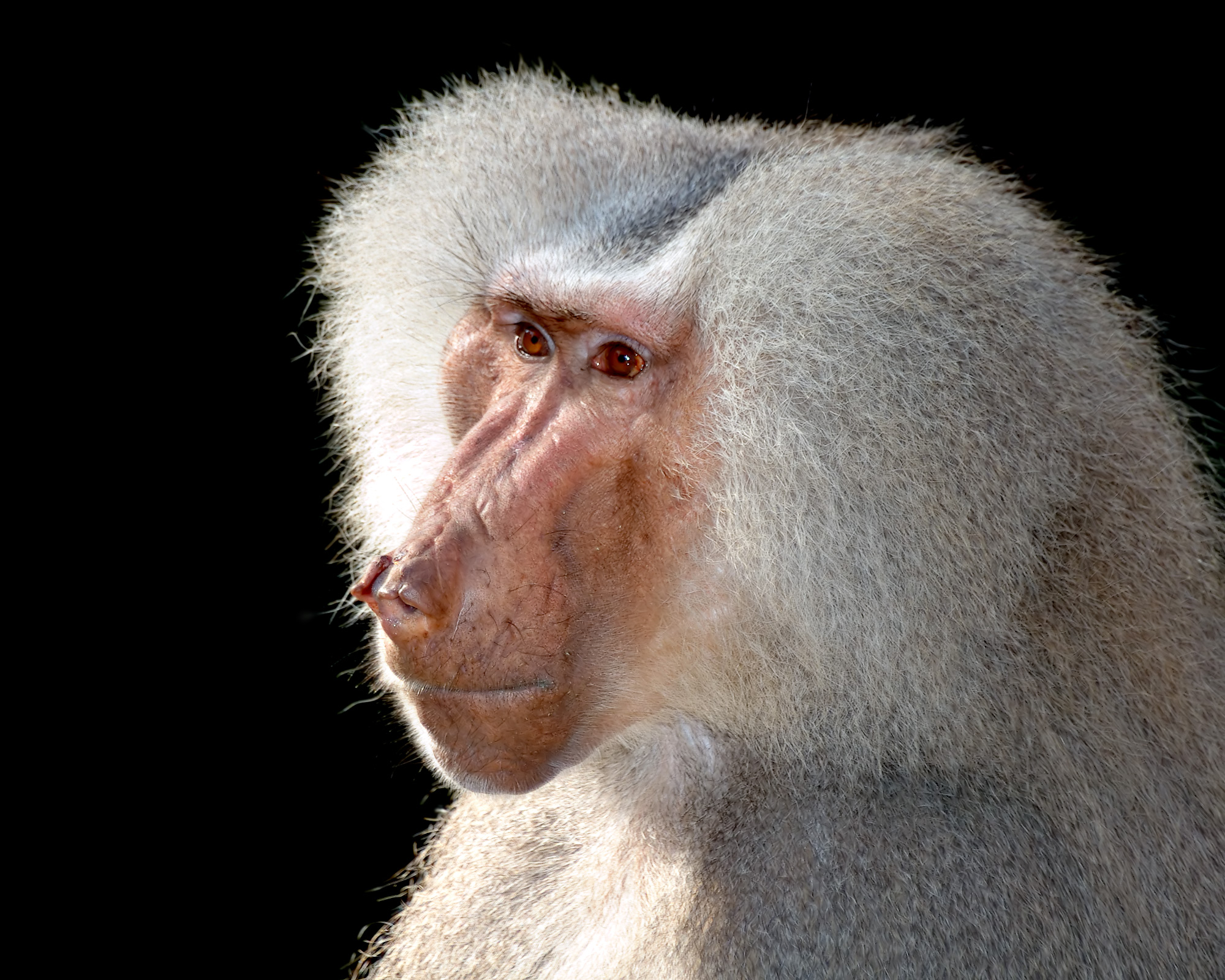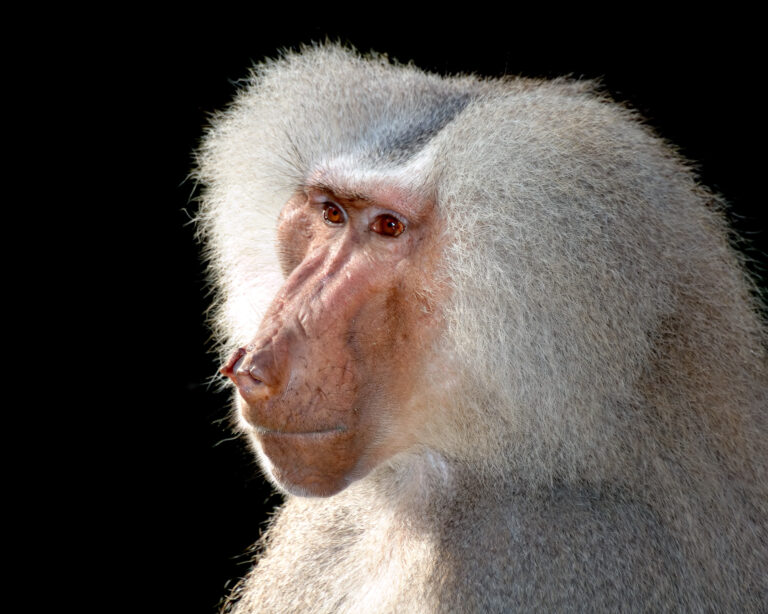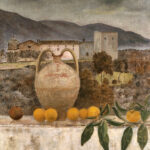An interdisciplinary project led by primatologist Gisela Kopp is using genetic analysis to determine the geographic origin of mummified baboons found in ancient Egypt. The team finds evidence that the two legendary trading regions of Punt and Adulis may have been the same place separated by a thousand years of history.

In ancient Egypt, various deities were portrayed as animals. Thoth, the god of learning and wisdom was represented by a hamadryas baboon. Baboons, probably held in captivity in Egypt, were mummified as votive offerings after their deaths. Today, no wild baboons live in Egypt, and there is no evidence to suggest that these primates did so in the past. In an interdisciplinary project involving biologists, Egyptologists and anthropologists, Gisela Kopp, a biologist from Konstanz who conducts research on non-human primates, pursued the question of how and from where baboons came to Egypt. The results have been published in the current issue of the journal eLife.
Baboons were imported
To pay homage to the deity Thoth, baboons were probably imported from distant regions and kept in captivity in ancient Egypt. As studies of skeletons show, they had their dangerous canine teeth removed. To determine the geographic origin of the baboons, Gisela Kopp and her team used genetic analyses. The region from which the animals originate can be determined with the help of the mitochondrial genome of the animal mummies. The distribution of baboons across the African continent and their genetic diversity is well studied.
“We have comparative samples from almost all regions where baboons live today,”
Gisela Kopp says. These were supplemented with approximately 100 to 150-year-old specimens from museum collections. Comparisons of samples from the widely separated time periods are possible because the location of the different genetic variants of the baboon populations is very consistent over time.

Comparative sample points to Adulis
One of the study’s collaborators, anthropologist Nathaniel Dominy from Dartmouth College in the United States, had already used stable isotopes to identify the respective geographic locations of mummified baboons. This method of using chemical signatures can be employed to distinguish between where animals were born and where they grew up. The study, published in 2020, was able to identify the Horn of Africa as the baboons’ region of origin. Using genetic analysis, which has higher geographic precision and can also determine where the animals and their ancestors came from originally, the location was narrowed down to a well-defined area in Eritrea and neighbouring regions. A comparative sample that was most similar to the genetic variant of the mummy specimen originates from the coastal region in Eritrea, where, in ancient times, the port of Adulis was probably located. Ancient texts refer to Adulis as a trading place for luxury goods and animals.
The mummy specimen used by Gisela Kopp and her team was excavated in 1905 in the “Valley of the Monkeys” and is now held in the Musée des Confluences in Lyon. The mummy is estimated to date back to between 800 and 500 BCE in the Late Period of ancient Egypt. This is long before Adulis flourished as an important trading centre and port.
Early historical texts mention Punt as the baboons’ place of origin, a legendary region from which Egypt imported luxury goods for centuries until early in the first millennium BCE. However, the exact location of Punt is unknown.
“Egyptologists have long puzzled over Punt, since some scholars have seen it as a location in early global maritime trade networks, and thus the starting point for economic globalization”, says Gisela Kopp.
Egyptology provides the link between Punt and Adulis
Punt is documented in ancient illustrations and texts from the same period as the mummy specimens. The Egyptological expertise in the project made it possible to link Punt to Adulis.
“The specimen we studied fits chronologically with the last known expeditions to Punt. Geographically, however, it fits Adulis, a location that, centuries later, was known as a trading place, also for primates. We hypothesize that Punt and Adulis are two different names for the same place that were used at different points in time”, Gisela Kopp says. And: “It was only after we put our biological findings in the context of historical research that the story really came together.”
In the field of biology itself the findings are a scientific breakthrough, because it was the first time that ancient DNA from mummified non-human primates was analyzed successfully. This opens up opportunities to study, for example, the impact of human-wildlife interactions on genetic diversity and their role in the transmission of diseases. The contact ancient Egyptians had with exotic animals is evidence for early intensive interactions between wild animals and humans. The mass mummification of different animal species and primates is a very extraordinary cultural practice.
The representation of baboons in images and artwork since antiquity is only found in Egypt. We do not know what made these primates special to people at that time and why they were elevated to the role of representing the deity Thoth. People that share an environment with baboons usually do not hold the animals in high regard. For these people, baboons were and are considered a nuisance and pest for damaging crops.
Key facts:
- Original publication: Franziska Grathwol, Christian Roos, Dietmar Zinner, Benjamin Hume, Stéphanie M Porcier, Didier Berthet, Jacques Cuisin Stefan Merker, Claudio Ottoni, Wim Van Neer, Nathaniel J. Dominy, Gisela H. Kopp: Adulis and the transshipment of baboons during classical antiquity. eLife 12:e87513. DOI: https://doi.org/10.7554/eLife.87513
- Interdisciplinary cooperative project of biologists, Egyptologists and anthropologists is using genetic analysis to search for the geographic origins of mummified baboons found in ancient Egypt. The team finds evidence that the two legendary trading regions of Punt and Adulis may have been the same place separated by a thousand years of history
- Project is led by primate researcher Dr Gisela Kopp, who is a member of the University of Konstanz’s Zukunftskolleg and is associated with the Max Planck Institute of Animal Behavior
- Funding for the study provided by the Young Scholar Fund and the Zukunftskolleg at the University of Konstanz in the context of the German Excellence Strategy as well as Die Junge Akademie of the Berlin-Brandenburg Academy of Sciences and Humanities and the German National Academy of Sciences Leopoldina
- Nathaniel J. Dominy was supported by a Senior Fellowship from the Zukunftskolleg; Gisela H. Kopp is currently supported by a Hector Pioneer Fellowship from the Hector-Stiftung II and the Zukunftskolleg.
Press release from the University of Konstanz.



